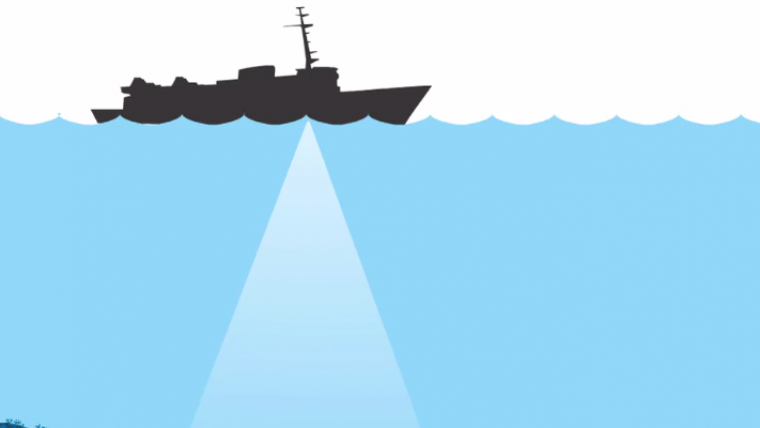How does backscatter help us understand the seafloor?
Backscatter is the reflection of a signal (such as sound waves or light) back in the direction from where it originated. Backscatter is commonly used in medical ultrasounds to understand characteristics of the human body, but in the world of hydrography and marine science, backscatter from sound waves helps us understand characteristics of the seafloor.
NOAA ships equipped with multibeam echo sounders use beams of sound to map the ocean floor. These sonar systems collect two types of 3D data: seafloor depth and backscatter. The seafloor depth, or bathymetry, is computed by measuring the time it takes for the sound to leave the sonar, hit the seafloor, and return to the sonar. Backscatter is computed by measuring the amount of sound that is reflected by the seafloor and received by the sonar.
Detailed 3D seafloor maps
Different bottom types 'scatter' sound energy differently, telling scientists about their relative hardness and roughness. Harder bottom types (like rock) reflect more sound than softer bottom types (like mud), and smoother bottom types (like pavement) reflect more sound than bumpier bottom types (like coral reef).
Combining bathymetry and backscatter data collected by multibeam echo sounders allows scientists to create very detailed 3D maps of the seafloor and the habitats present there. The information is used for multiple purposes, including marine ecosystem protection, coastal hazard preparedness, and navigation safety.
The video below – brought to you by NOAA – shows how backscatter works.
Backscatter – measure of sound that is reflected by the seafloor and received by the sonar. A stronger return signal indicates a hard bottom such as coral or rocks. A weaker return signal indicates a soft bottom such as mud. Scientists use this information to create detailed 3D maps of the seafloor and the habitats present on the bottom of the ocean with the goal of improving navigation safety and marine ecosystem protection.














